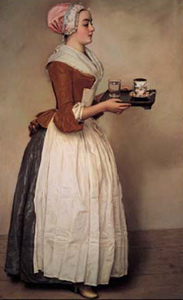
 |

|
About pastel
 The word "pastel" derives from Italian pastello, diminutive from pasta, translated as dough. In the process of the pastel's production they really resemble dough - that's the roots of their denomination. The word "pastel" derives from Italian pastello, diminutive from pasta, translated as dough. In the process of the pastel's production they really resemble dough - that's the roots of their denomination.
In the XVIII century pastel became an independent technique and acquired a particular popularity in France, where it's used by such prominent artists as Bushe, Morris Konten de la Tur, Sharden, afterwards by Grez, Liotar, Delakrua. The Italian artist Rosalba Cariera was one of the most distinguished pastelists.
Many artists of the last three centuries applied this technique. Modern artists also began to use it more frequently as pastel, undoubtedly, wins by particular freshness, smoothness of colors and a soft, velvety texture. Moreover, pastel in contrast to liquid paints doesn't change absolutely its colors.
The artists grew fond of pastel for its possibility to convey mellowy and lush tints. Pastel is soft and delicate material. It can be applied for painting a fluffy pile of a kitten, a nice dandelion, romantic portraits and so forth. The well-known painting "The Chocolate Girl" that is exhibited in the Dresden gallery is a vivid example of using pastel in painting. Striking by its freshness and purity of paints the painting seems to be just painted though it was executed in the XVIII century!
Pastel is limp colored pencils produced from pigments, chalk and binders. The paintings in pastel can be interpretated as a drawing or a painting in watercolor or gouache painting. A great amount of mellowy hues of every color gives a possibility to produce smooth passages of tints by means of rubbing paint in the paper and mat surface… Pastel is the most romantic technique of painting.
|
|





